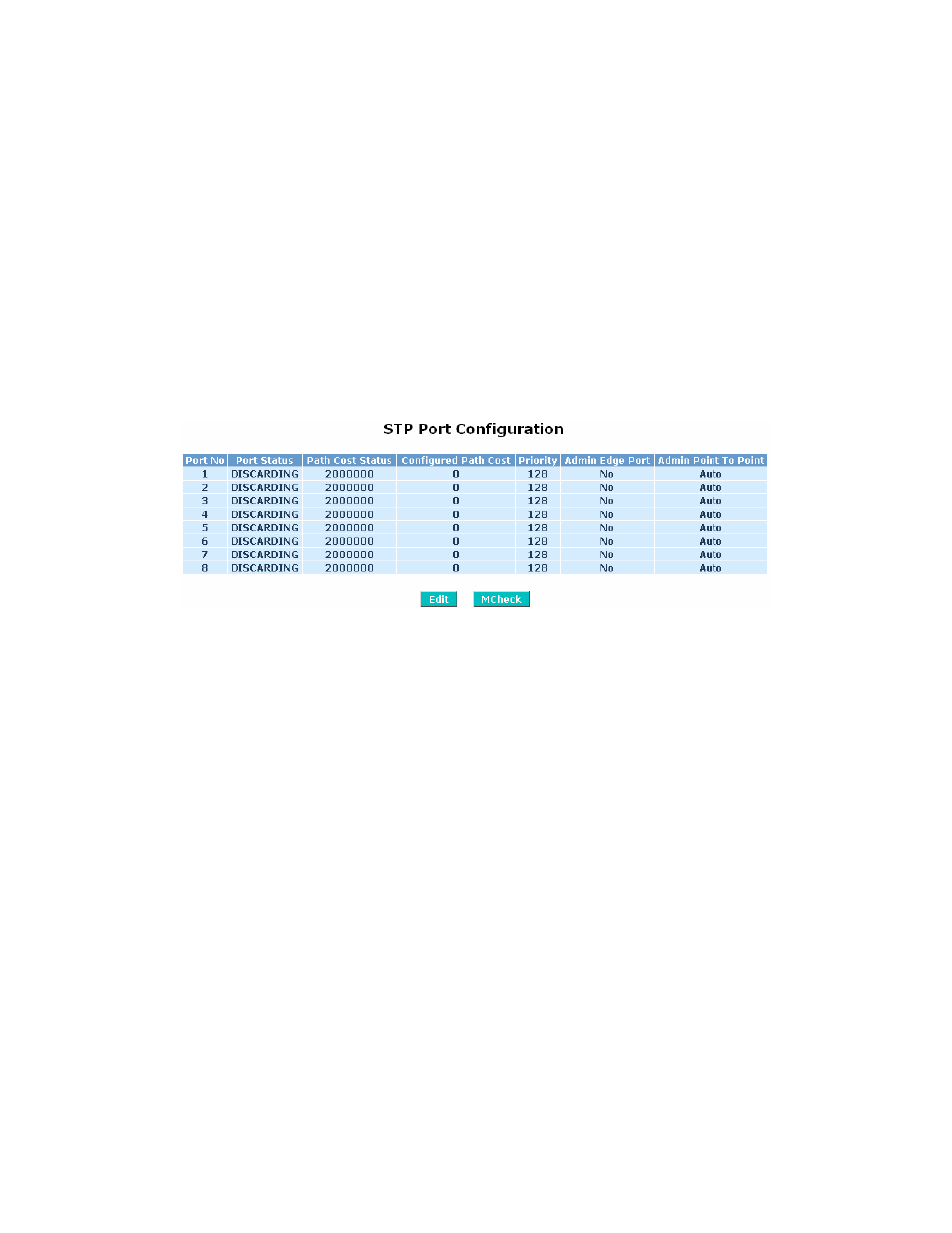Port – Amer Networks SS2GD8I User Manual
Page 51

45
seconds. Default is 20 seconds.
Forward Delay: Set the root bridge forward delay time. This figure is set by the root bridge only. The
forward delay time is defined as the time spent from Listening state moving to Learning state and also
from Learning state moving to Forwarding state of a port in a bridge. The forward delay time contains two
states, Listening state to Learning state and Learning state to Forwarding state. Assuming that forward
delay time is 15 seconds, then total forward delay time will be 30 seconds. This affects STP convergent
time which will be more than 30 seconds because some other factors. Valid values are from 4-30
seconds, default is 15 seconds.
Force Version: Both RSTP and STP are supported. If STP is chosen, RSTP will run as a legacy STP.
The switch supports RSTP (802.1w) which is backwards compatible with STP (802.1d).
3.13.3 Port
The STP Port Configuration page (Figure 3-43) allows the user to configure STP settings for each port.
You can disable and enable each port, and also set “Path Cost”, “Priority”, “Admin Edge Port” and “Admin
Point To Point” for each port.
Figure 3-43: STP Port Configuration Page
Port Status: Displays the current state of a port as defined by 802.1w.The three states are:
• Discarding state indicates that this port can neither forward packets nor contribute learning
knowledge. Note that three other states (disable state, blocking state and listening state) defined in
the 802.1d specification are now all represented as the discarding state.
• Learning state indicates that this port can now contribute its learning knowledge but cannot forward
packets.
• Forwarding state indicates this port can both contribute its learning knowledge and forward packets
normally.
Path Cost Status: Shows the contribution value of the path through this port to the root bridge. The STP
algorithm determines a best path to Root Bridge by calculating the sum of path costs contributed by all
ports on this path. A port with a smaller path cost value is more likely to become the Root Port.
Configured Path Cost: In the switch, if path cost is set to be zero, STP will get the recommended value
resulting from auto-negotiation of the link accordingly and display this value in the field of Path Cost
Status. Otherwise, it may show the value entered in the Configured Path Cost and Path Cost Status. Valid
range is from 0-200,000,000. Default is 0.
The 802.1w RSTP recommended value depends on the speed of the network. 10 Mbps is 2,000,000, 100
Mbps is 200,000, and 1 Gbps is 20,000.
Priority: Port Priority and Port Number are mixed to form the Port ID. Port IDs are often compared in
order to determine which port of a bridge will become the Root Port. Valid values are from 0-240. Default
is 128.
Admin Edge Port: If “Yes” is selected, this port will be an edge port. An Edge Port is a port connected to
